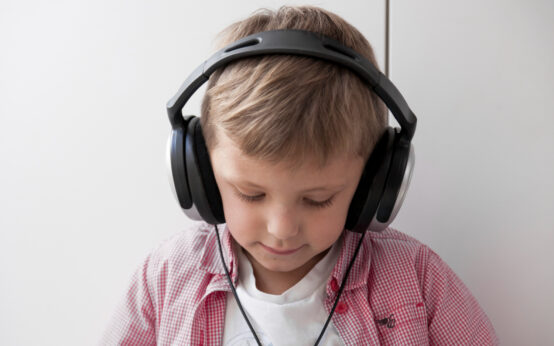Introduction
“I’m highly sensitive to sensory stimuli, to the point where it’s almost painful. The intensity of loud noises compels me to shield my ears and seek refuge beneath the earth. Bright lights are anxiety-inducing and disorienting. Some textures are unbearable, and certain smells affect me more than others. The other day, I had an anxiety attack after touching a bag with rotten cucumbers, and I couldn’t figure out where to put my hands. Whenever I bring this up to my psychiatrist or therapist, they attribute it to anxiety. But I suspect it might be something more, maybe autism or Sensory Processing Disorder. I’m not sure.”
These words, shared by a Reddit user, capture the confusion and frustration of someone grappling with their own behaviors. They recognize that their experiences go beyond mere anxiety, yet even mental health professionals struggle to provide a clear explanation.
So, how can we differentiate between Sensory Processing Disorder (SPD) and autism?
Understanding Sensory Processing Disorder (SPD)
SPD, also known as Sensory Integration Disorder, is a condition where the brain struggles to process and respond to sensory information. This includes the usual senses like sight, sound, touch, taste, and smell, as well as internal senses related to balance and body awareness (proprioception). Individuals with SPD may experience heightened sensitivity or low sensitivity to sensory input, which can lead to difficulties in daily life.
Sensory Processing Disorder and Autism are not just diagnoses, they are unique perspectives that offer us a deeper understanding of the world. Embrace the differences, for they are the threads that weave the fabric of humanity.
Dr. Lucy Jane Miller
Symptoms of Sensory Processing Disorder
The symptoms of SPD can vary widely from person to person, and the severity of the condition can differ greatly. Some common symptoms include:
- Over responsivity: Certain stimuli like bright lights, loud noises, or specific textures can be overwhelming and cause distress.
- Under responsivity: Some individuals may not respond to touch, pain, or sounds, making it hard to recognize environmental cues or engage in social interactions.
- Sensory Seeking: Seeking intense experiences like spinning or touching objects excessively to regulate sensory systems.
- Poor Sensory Discrimination: Difficulty distinguishing between different textures or identifying where a touch is coming from.
- Poor Motor Coordination: Challenges in activities like writing, tying shoelaces, or using utensils.
- Emotional and Behavioral Challenges: Easily overwhelmed, irritable, anxious, or prone to meltdowns when faced with sensory triggers.
- Difficulty with Transitions: Struggling to adapt to new environments or changes in routine due to unfamiliar sensory experiences.
SPD can coexist with other conditions like autism, attention deficit hyperactivity disorder (ADHD), or developmental delays.
Understanding Autism
Autism, also referred to as Autism Spectrum Disorder (ASD), is a complex neurodevelopmental condition that affects a person’s capacity to communicate, participate in social interactions, and process information. It’s called a “spectrum” disorder because symptoms and characteristics can vary greatly from one individual to another. Autism typically becomes apparent in early childhood and persists throughout life.
Symptoms of Autism
In addition to core features like challenges in social communication and interaction, autism can also be associated with:
- Sensory Sensitivities: Heightened sensitivity to sensory stimuli, leading to discomfort or distress.
- Communication Difficulties: Delayed speech or language development, trouble understanding sarcasm, or maintaining a conversation.
- Intellectual and Learning Differences: A broad spectrum of cognitive capacities.
- Motor Coordination Issues: Motor clumsiness.
- Difficulty with Change: Preference for routine and predictability.
While autism shares common characteristics, each person’s experience with the condition is unique. Some individuals may excel in specific areas due to their intense focus and attention to detail.
Connections Between Autism and Sensory Processing Disorder
Autism and SPD are two distinct but closely related conditions that often coexist. They share significant connections in their symptoms and characteristics. Although autism and sensory processing disorder (SPD) are distinct conditions, the sensory processing challenges experienced by people with autism can share commonalities with those encountered by individuals with SPD.
Sensory Sensitivities
Both autism and SPD are associated with sensory sensitivities. Individuals with autism may experience hyper or hypo-sensitivity to various sensory inputs, such as lights, sounds, textures, smells, and touch. Similarly, those with SPD have heightened or reduced sensitivity to sensory stimuli, which can lead to over responsiveness or under responsiveness to their environment.
Sensory Overload
Both conditions can result in sensory overload, where the individual becomes overwhelmed and distressed by an excessive amount of sensory input. Experiencing an overwhelming amount of sensory input can result in feelings of anxiety, irritability, or meltdowns for individuals who have autism or sensory processing disorder (SPD).
Social Communication Challenges
Both autism and SPD can impact social communication skills. Difficulties with processing and responding to social cues can make it challenging for individuals to understand nonverbal language, maintain eye contact, and interpret emotions in others.
Repetitive Behaviors
Autism is characterized by restricted and repetitive behaviors, which can also be observed in some individuals with SPD. Engaging in repetitive actions or self-stimulating behaviors may act as a way to manage challenges related to sensory processing.
Motor Coordination Issues
Sensory processing challenges can impact motor coordination in individuals diagnosed with autism or sensory processing disorder (SPD). Fine and gross motor skills may be impacted, leading to challenges in tasks that require precise movements or body coordination.
Co-Occurrence
Studies have shown that sensory processing difficulties are highly prevalent in individuals with autism. Many individuals diagnosed with autism also meet the criteria for Sensory Processing Disorder, indicating a strong overlap between the two conditions.
Differences Between Autism and Sensory Processing Disorder
While autism and SPD share some similarities in terms of sensory challenges, there are significant differences between the two. Comprehending these distinctions is vital for precise diagnosis and effective intervention plans.
Core Symptoms and Characteristics
Autism: The core symptoms of autism include difficulties in social communication and interaction, restricted and repetitive behaviors, and interests. The manifestations extend beyond sensory difficulties to encompass obstacles in domains like social interaction, understanding others’ perspectives, and interpreting and reacting to emotions and social signals.
SPD: Sensory Processing Disorder (SPD) is fundamentally rooted in the challenge of processing sensory information from the surroundings. Although sensory challenges can influence social interactions and behavior, SPD’s central characteristics center on sensory sensitivity, responsiveness, and the processing of sensory stimuli.
Diagnosis and Classification
Autism: Autism is classified as a neurodevelopmental disorder and is typically diagnosed based on observed behaviors and developmental history. It is a spectrum disorder, meaning it presents with a wide range of severity, leading to various degrees of challenges and strengths in different individuals.
SPD: Sensory Processing Disorder is not currently recognized as a separate diagnosis in the DSM-5. Instead, it is often considered a component of other conditions, such as autism, attention deficit hyperactivity disorder (ADHD), or developmental coordination disorder. Some professionals use the term SPD descriptively to refer to sensory-related challenges but not as an independent diagnosis.
Scope of Symptoms
Autism: The symptoms of autism encompass a broad range of challenges beyond sensory issues. These may include difficulties in communication (verbal and nonverbal), social interaction, executive function, repetitive behaviors, and specific interests.
SPD: The primary focus of SPD is on sensory difficulties, such as sensory seeking, sensory over responsivity, and sensory under responsivity. While these challenges can affect daily functioning and behavior, SPD does not include the comprehensive social and communication issues associated with autism.
Prevalence
Autism: Autism is relatively common, with estimates suggesting that around 1 in 54 children in the United States have autism spectrum
Source
- American Psychiatric Association. (2013). Diagnostic and statistical manual of mental disorders (5th ed.). Arlington, VA: American Psychiatric Publishing.
- Bhat, A. N., Landa, R. J., & Galloway, J. C. (2011). Current perspectives on motor functioning in infants, children, and adults with autism spectrum disorders. Physical Therapy, 91(7), 1116–1129.
- Miller, L. J., Anzalone, M. E., Lane, S. J., Cermak, S. A., & Osten, E. T. (2007). Concept evolution in sensory integration: A proposed nosology for diagnosis. American Journal of Occupational Therapy, 61(2), 135–140.
- Schaaf, R. C., & Lane, S. J. (2015). Toward a best-practice protocol for assessment of sensory features in ASD. Journal of Autism and Developmental Disorders, 45(5), 1380–1395.
- Tomchek, S. D., & Dunn, W. (2007). Sensory processing in children with and without autism: A comparative study using the short sensory profile. American Journal of Occupational Therapy, 61(2), 190–200.
- Zwaigenbaum, L., Bauman, M. L., Choueiri, R., Fein, D., Kasari, C., Pierce, K., … & Wetherby, A. (2015). Early intervention for children with autism spectrum disorder under 3 years of age: Recommendations for practice and research. Pediatrics, 136(Supplement 1), S60–S81.







